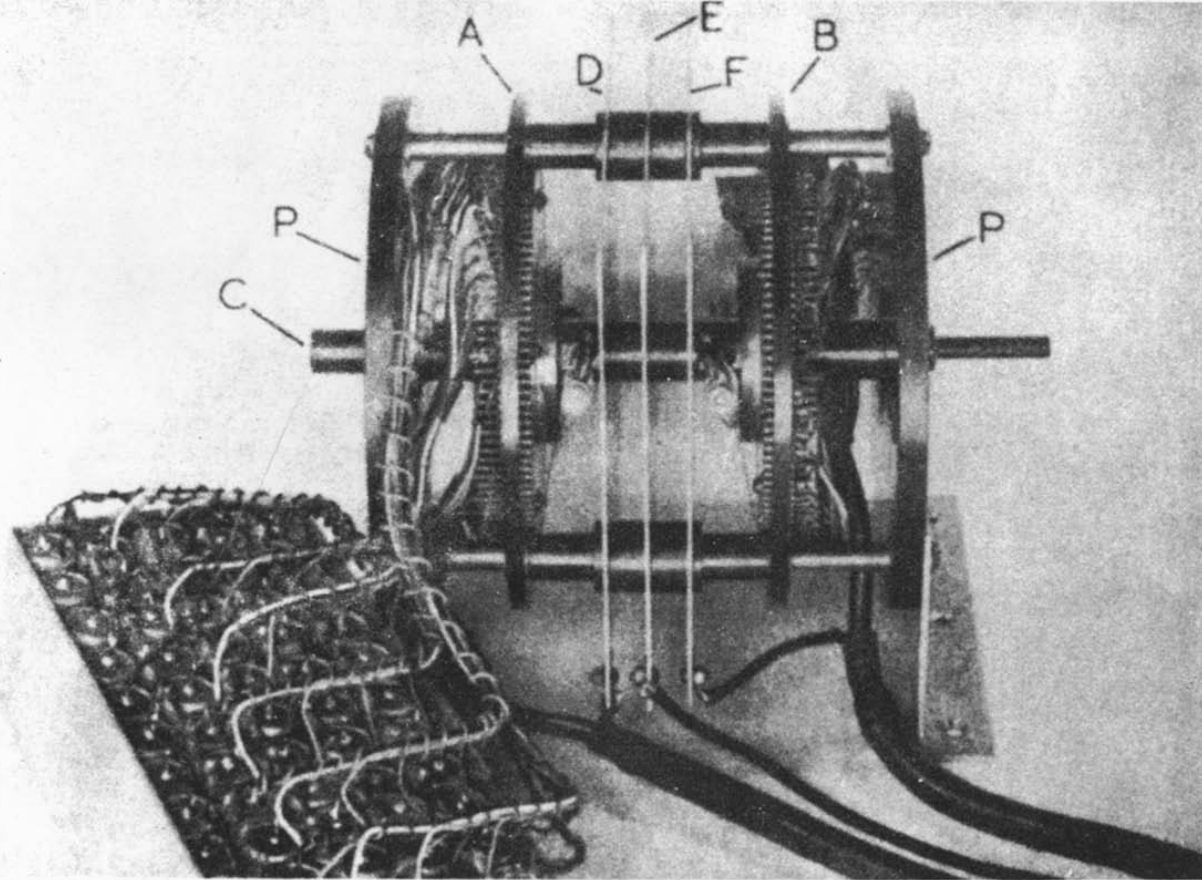Would you believe me if I said we’ve been measuring brain activity long before traditional computers even existed? In the 1954 paper titled, “A summation technique for the detection of small evoked potentials”, Dawson proposes an updated mechanism to capture a person’s neural activity when they respond to a stimulus. For context, he was living in interesting times where other scientists like Brazier and Casby would use Lee’s method to electronically detect small evoked responses. But how was Dawson different? He wanted to create a mechanical machine to sample this brain activity. I think it’s worthwhile to study this system because it can be intuitive despite being unconventional to our very digital age way of thinking. Let’s check out Dawson’s system!
The Distributor and Storage Unit: A and B are two distributors. Cs1—62 are one bank of storage capacitors. G1, G2, and G3 are the reduction gears. K1 and K2 are the timing contacts that initiate the stimuli, charge the store, and start the display sweeps. M is the 50 c/sec synchronous driving motor.
The Distributor Unit: C is the insulating spindle that revolves ball bearings in the end plates at P. Then it carries the rotating contacts of two distributors at A and B. There is an earthed screen at E that separates the units and screens D and F. The screens are maintained at the same potential as the rotors in the distributors at A and B to reduce capacity from the rotors to E.
A scheme of the apparatus used for averaging: Sla and Slb are the two distributors. Ca1 to Cs62 the storage capacitors on one of them, and K1 and K2 are contacts closing 10 times a second and once a second respectively. G1, G2 and G3 are gear boxes giving the reductions shown. The input signal is observed on CRT 2 and the average waveform on CRT 1.
Does it seem confusing? I’ll be honest, I’ve read this paper a couple of times and I still don’t fully understand how this mechanical system can average large spontaneous EEG activity in the brain with simple oscillograms. Despite that, it’s kind of… beautiful. I love how this paper uses a detailed appendix to show the schemas, circuit diagrams, and photographs of the Dawson machine. It helps remind you of times where even brains can benefit from mechanical solutions, despite electronic systems being prevalent. Broadly, I’d like to see a paradigm shift in neurotechnology — to favour hardware and mechanical firmware solutions when possible (even if it’s more difficult than digital systems).



